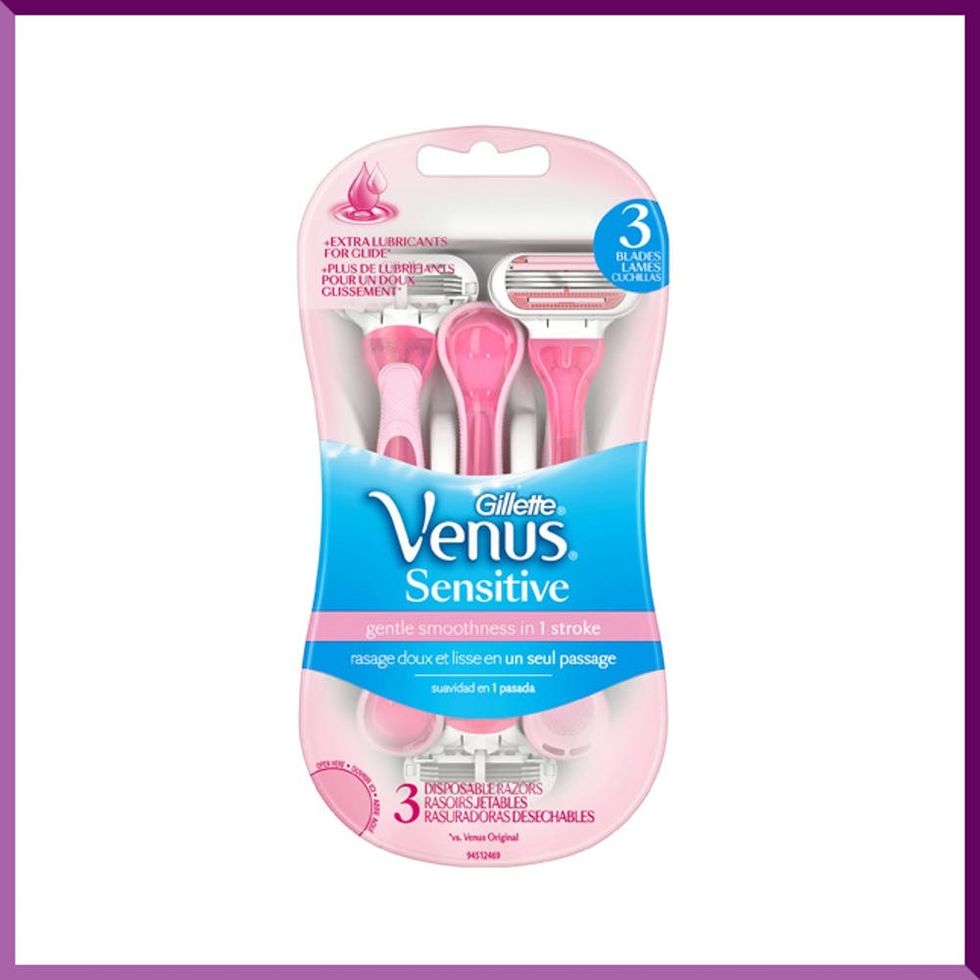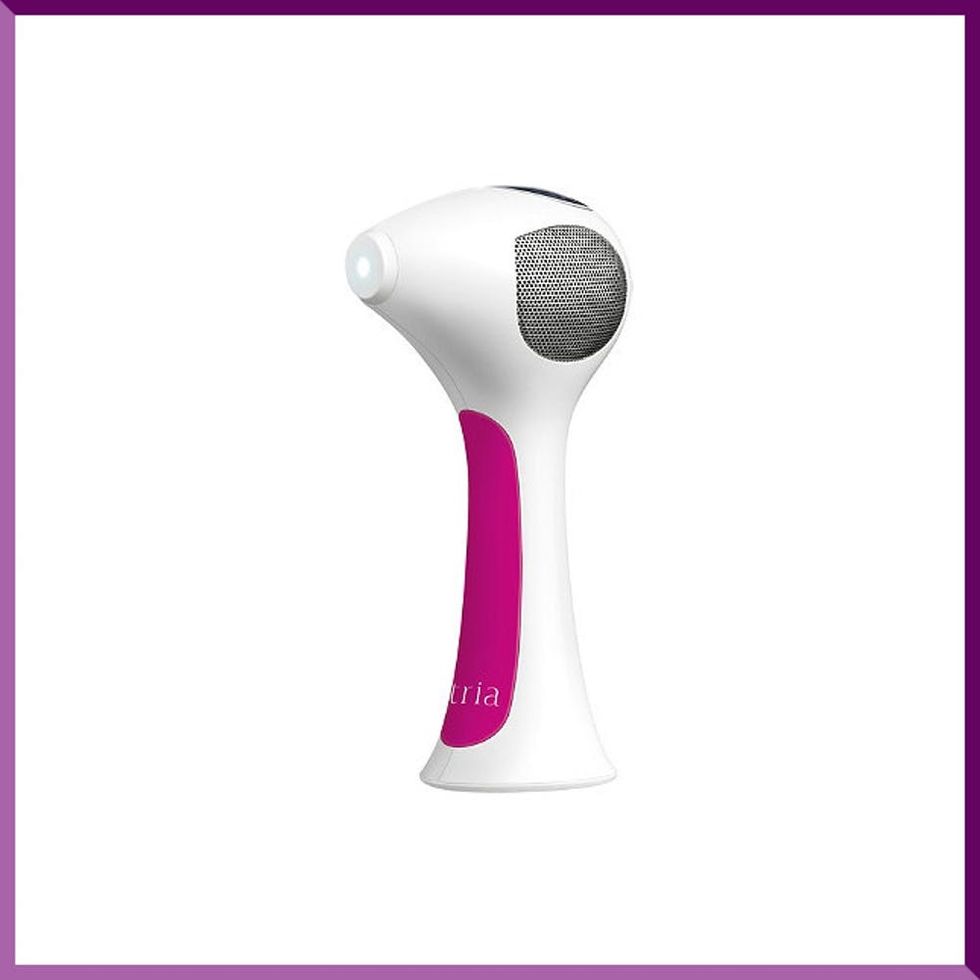It’s smooth sailing from here.
How to Get the Best Results from at-Home Hair Removal

There’s nothing worse than receiving an impromptu pool party invite only to realize you haven’t thought about hair removal since last summer. Sometimes, a quick shave gets the job done, but it’s not always your best bet — plus, there are other at-home options out there that might be better suited for your skin. Here, we break down when you should shave, wax, and laser — and reveal how to maintain smooth results for as long as possible.
SHAVING

If you have extra dry skin, don’t discount the OG of hair removal because of the exfoliation that comes with each stroke — score! Sensitive (skin) types should also keep this in their arsenal, as it’s generally non-irritating. To get the closest shave possible that’s also long-lasting, make sure you have top-notch products ready. “The biggest mistake women make is not using enough shaving cream and using an old razor,” says Maryland-based dermatologist Elizabeth Tanzi.
Pros: It’s quick and convenient — you can easily hop in the shower and be hair-free in a matter of minutes. Plus, it’s relatively affordable. You can either invest in a handle and replace the razor heads at the first sign of dullness, or spring for travel-friendly versions like Gillette Venus Sensitive Disposable Razors ($13).
Cons: “Shaving will cause the quickest return of hair because it just removes the top of the hair, not the root,” Tanzi, founder and director of Capital Laser & Skin Care, says. Beyond dealing with stubble, shaving can cause ingrown hairs that can be particularly problematic in the bikini area. If you have an infection or are dealing with damaged skin, this method can spread it to other hair follicles, according to Tanzi.
Prep: Water temperature is key and can affect how closely you can shave. “Use very warm water to soften the skin before starting,” she says. “Don’t forget to use a thick shaving cream like Aveeno Positively Smooth Shave Gel ($4).”
Maintenance: Hydration is everything after we rid ourselves of hair, and Tanzi recommends applying the heaviest moisturizer you can find.
WAXING

Lots of us head to our esthetician to get silky smooth, but for those of us who opt for at-home options, it’s important to know how to max out your wax.
Pros: Simply put: You’ll stay smoother, longer if you go the waxing route. You also don’t have to worry about prickly stubble as much since waxing removes hair from the root instead of just the surface. At-home kits like Sally Hansen Extra Strength All-Over Body Wax Hair Removal Kit ($12) or Bliss Poetic Waxing Kit ($48) work great on less sensitive areas like your legs, arms, and underarms. If you want to be fuzz-free on your face, find a product like Nads Facial Wax Strips ($5), which is formulated to remove the area’s extra short, fine hair.
Cons: Waxing can leave you prone to ingrown hairs (especially in the bikini area). It can also be uncomfortable and even painful, depending on where you’re going hair-free and the type of wax you’re using. If you use skincare products that contain retinol and/or glycolic acid, you could be left with unsightly and uncomfortable abrasions. What’s worse, if you’re too aggressive or hair isn’t long or thick enough, you might tear the skin. Ouch!
Prep: Take a shower before waxing so the area is totally clean. While you’re lathering up, check out the area you’re going to wax — if you notice any pre-existing irritation, hold off on hair removal until you’re all healed up. As mentioned above, you should also let your hair grow a bit before you remove it; the ideal length for leg, underarms, and bikini area hair is about an eighth to a quarter of an inch long. Finally, pop your pain-reliever-of-choice about 20 minutes before you start removing your fuzz. It can help take the edge off and make the discomfort more tolerable.
Maintenance: “A good trick for post-wax maintenance is to use an over-the-counter hydrocortisone cream for 24 hours before and after getting waxed,” Tanzi recommends. Beyond that, try to avoid shaving as much as possible in between your at-home waxes. That way, the next time you’re up for a wax, the hair will be fully grown-out and ready for clean, easy removal.
At-Home Laser

Laser hair removal used to be reserved for those of us who were down to shell out serious dough on in-office services, but that’s all changed. At-home devices make it easy and much more affordable to achieve legit results on larger, less-sensitive areas like your legs, arms, and underarms.
Pros: Lasering off your fuzz will give you the longest-lasting results, period. You’re literally killing the hair follicle, preventing it from ever being able to grow back. At-home gadgets like the Tria Hair Removal Laser 4X ($449) are becoming more popular because they let you have total control over how frequently and how powerfully you choose to use it. Instead of silently sitting through an extra painful session, you can work your way up from a low setting, making the experience totally personalized and comfortable.
Cons: “Be prepared to do a lot of treatments, which can take a lot of time, until the hair is finer and thinner,” says Tanzi. Beyond the time and financial investment, it can be a painful process (numbing cream can help). It also doesn’t work for everyone; most at-home lasers aren’t effective for those of us with dark skin or light hair.
Prep: It might sound counterintuitive, but shaving before you use the laser is crucial. You want all of the laser’s power to be focused on getting into that hair root, not on burning off remnants that have already reached the skin’s surface.
Maintenance: After you’re lasered, use an over-the-counter hydrocortisone cream for 24 hours to calm and soothe your now smooth skin. Keep in mind that consistency is key; be prepared to do regular treatments until the hair changes in texture and you get those fuzz-free gams you’re after.
Follow us on Pinterest for more beauty inspo and info.























